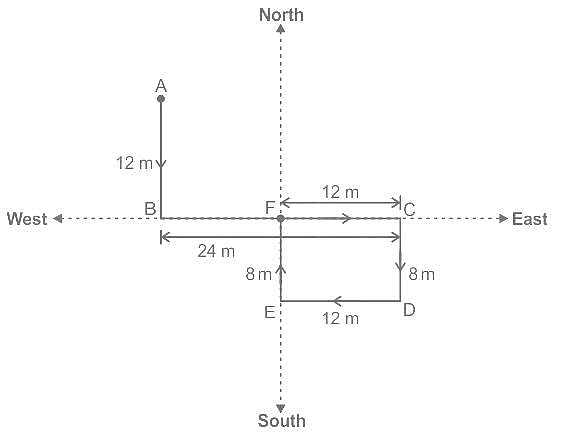APSC JE CE Paper 1 Mock Test - 9 - Civil Engineering (CE) MCQ
30 Questions MCQ Test APSC JE CE Mock Test Series 2024 - APSC JE CE Paper 1 Mock Test - 9
What was the important port of eastern coast in the Sangam age?
| 1 Crore+ students have signed up on EduRev. Have you? Download the App |
What was the second capital of Vijayanagar empire?
Assertion (A) : The Congress party led by Indira Gandhi gave the slogan of Garibi Hatao (remove poverty) in the Lok Sabha elections of 1971.
Reason (r) : The party promised to reorient all the policies of the government to remove poverty from the country.
What was the function of officer known as Gopa during the reign of Chandragupta Maurya?
The countries with per capita income of 935 US $ (2007) or less are termed as
Direction: Out of four alternatives,choose the one which can be substituted for the given words/sentence.
Anything which is no longer in use
The past two decades of globalisation has seen rapid movements in
Which of the following is not a feature of a MultiNational Company?
A, B, C, D, E and F are sitting on a row facing the South direction, but not necessarily in the same order. E is sitting immediate left to the B. A is sitting fourth right to the B. F is sitting between A and D. Who is sitting immediate left to the D?
In the early 1600s, a trip across the Atlantic Ocean was a daunting idea. The Europeans must have been a very determined and brave group of settlers. A daunting task is one that would _______ someone
When is World Oral Health Day observed annually?
Who has been appointed as the Executive Director (ED) of the Securities and Exchange Board of India (SEBI) for a tenure of three years?
If a man has to travel to point E from point A (through these points by the shortest distance), which of the following points will he pass through first?
The signal from the cable is too strong for our television. We’ll have to use a filter to attenuate it. When you attenuate something, you _______________
Which of the following Fundamental Rights prohibits traffic in human beings?
Directions: In questions given below out of four alternatives, choose the one which can be substituted for the given word/sentence.
Q. Extreme old age when a man behaves like a fool.
Direction: Read the following passages carefully and answer the question that follows.
For fourteen and a half months I lived in my little cell or room in the Dehradun jail, and I began to feel as if I was almost a part of it. I was familiar with every bit of it, I knew every mark and dent on the whitewashed walls and on the uneven floor and the ceiling with its moth-eaten rafters. In the little yards outside I greeted little tufts of grass and odd bits of stone as old friends. I was not alone in my cell, for several colonies of wasp and hornets lived there, and many lizards founds a home behind the rafters, emerging in the evening in search of prey.
Q. The passage attempts to describe ?
Direction: Read the following passages carefully and answer the question that follows.
For fourteen and a half months I lived in my little cell or room in the Dehradun jail, and I began to feel as if I was almost a part of it. I was familiar with every bit of it, I knew every mark and dent on the whitewashed walls and on the uneven floor and the ceiling with its moth-eaten rafters. In the little yards outside I greeted little tufts of grass and odd bits of stone as old friends. I was not alone in my cell, for several colonies of wasp and hornets lived there, and many lizards founds a home behind the rafters, emerging in the evening in search of prey.
Q. The author of the passage seems to suggest that?
Which of the following is an activity related to the unorganized sector?
How was the massacre of Albanians finally stopped?
Directions: Each of the following consists of a question and two statements numbered I and II given below it. You have to decide whether the data provided in the statements are sufficient to answer the question:
Madhavi joined the office on which date?
Statement I: Madhavi’s daughter correctly remembers that Madhavi joined the office after 4th November but before 10th November.
Statement II: Madhavi’s husband correctly remembers that Madhavi joined the office after 7th November but before 12th November.
























